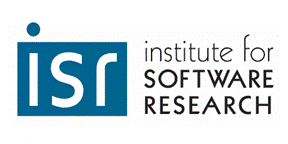
Institute for Software Research
School of Computer Science, Carnegie Mellon University
Destabilization of Adversarial Organizations
with Strategic Interventions
Il-Chul Moon
June 2008
Ph.D. Thesis
Computation, Organizations and Society
Destabilization of adversarial organizations is crucial to combating terrorism.
The adversarial organizations are complex adaptive systems, which include
different types of entities and links to perform complex tasks and evolve
over-time to adapt to changing situations. Both the complexity
and the adaptivity of the adversary make it difficult for friendly forces
to destabilize the adversary and to damage the performance of the adversary's
organization. The commander desires to identify the terrorists command
structure, key leader; assess their capability; and identify weaknesses;
current technologies do not support these desires. At best, the commander
might know historic activities, and most of the web of connections among
known terrorists.
By taking a dynamic network analytic approach and focusing on how to identify, reason about, and break 1) the adversary's decision making structure, 2) the likelihood that the adversary can engage in key tasks; and 3) the adversary's over-time social and geospatial behavior, we can begin to make headway in reasoning about this complexity and adaptivity. I develop four different, interoperable approaches supporting this assessment and estimation on adversarial organizations. These four approaches analyze different aspects of an organization, i.e. the core decision making structure, the high level assessment of task completion likelihood and the micro level simulation of the behavior of adversaries. By unifying these approaches, we can grasp a complete picture of the target as well as the destabilization strategies against it. First, I estimate the decision making structure of the organization, apply dynamic analysis metrics to it, and identify critical terrorists to be removed. This decision making structure is a trimmed organizational structure expected to be the critical command structure of the adversaries. Second, I extract an influence network for the key tasks. This is an assessment about the organizational support for the adversaries' mission. Third, I use a multi-agent simulation (JDynet) to analyze organizational change. I simulate the adversaries' social interactions and task execution behavior. Also, I create and test simulation scenarios of removing key adversaries over the course of simulations. This estimates the damage that we can inflict on the adversarial organization with interventions. Fourth, I augment a geospatial component to JDynet, so the relocations of personnel and resources are included in the destabilization analysis. I use the geospatial-JDynet to simulate the strategic intervention effects with a joint picture from adversaries' social and geospatial behavior.
To ground and demonstrate this research, I use, primarily, three adversarial organizations, the terrorist networks responsible for 1998 US embassy bombing in Tanzania and Kenya; 1998 US embassy bombing in Kenya; and a global terrorist network. These are adversarial organizational structures including a task dependency network for mission execution; geospatial terrorist, resource and expertise distributions; and terrorist social networks. I regard these datasets as an observed target adversarial structure and provide analyses results that are basis for destabilization strategies.
My research makes contribution at theoretical, technical and empirical levels. First, I provide a theory of how to create a joint picture from different organizational and computational theories. I create theories to merge various existing theories, i.e. merging multi-agent simulations and dynamic network analysis, dynamic network analysis and Bayesian network, dynamic network analysis and decision making structure, etc. This theoretical advancement provides a joint thought and analysis process about reasoning organizational behavior to managers, commanders and intelligence analysts. Second, I develop and test an interoperable analysis framework supported by the suggested joint theory. This analysis framework is realized by expanding an analysis system (Organization Risk Analyzer), so that real world analysts can apply the suggested theory to their target organizations. Third, I empirically analyze three adversarial organizations to demonstrate the usage of this framework and the newly enabled analysis results. For example, the newly enabled analysis approaches estimate Bin Laden considered as a non-critical terrorist in the U.S. Embassy Bombing in Tanzania and Kenya based on the existing dataset and approach is an actual critical contributor over the mission execution.
This unifying theory and framework for adversarial destabilization, a partially automated intelligence analysis capability, 1) provide intelligence analysis results that can meet the operation tempo in the real world, 2) bridge dynamic network analysis and various inference theories, and 3) provide a better tool that human analysts may use to reduce their time and cost of destabilization analysis.
275 pages
Return to:
SCS Technical Report Collection This page maintained by reports@cs.cmu.edu
School of Computer Science homepage